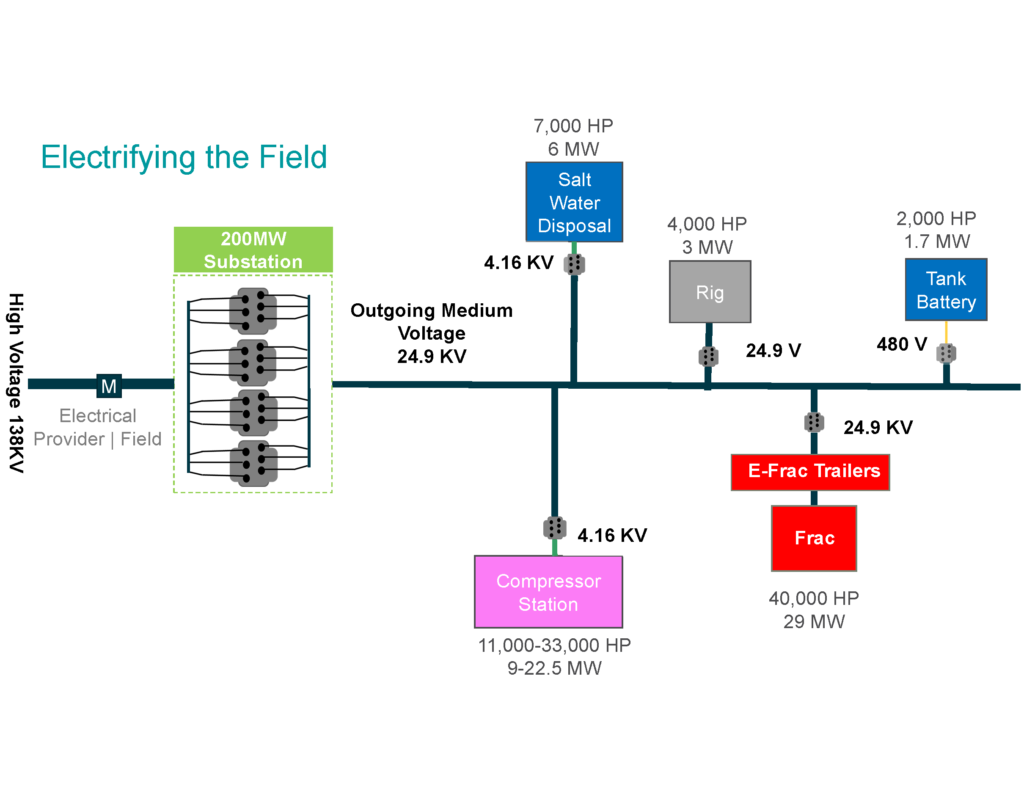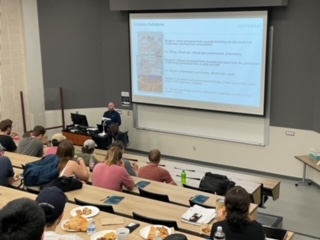Coterra takes every opportunity to engage with the community and discuss the benefits of American energy. A few of our team members recently attended an event for the student chapter of the Society of Petroleum Engineers. It was held at Texas A&M University and included undergraduate and postgraduate students.
Representing Coterra were Sy Browning, Facilities Engineer; John Tinker, Surface Operations Manager; and Brendan McCalpin, Production Manager. The team demonstrated the evolving importance of emissions in our industry and the innovative work Coterra is doing to tackle these complex challenges across our organization.
They identified three types of emissions-causing activities:
- Scope 1: Direct Emissions from sources including on-site fossil fuel combustion and fleet fuel combustion. Example: flaring, diesel rigs, natural gas compressors, pneumatics
- Scope 2: Indirect Emissions from sources that result from generation of electricity purchased from a utility provider. Example: electric compressors and pumps, electric frack crews
- Scope 3: All Indirect Emissions beyond Scope 2 that occur in the value chain of the reporting company. Example: natural gas and oil used by consumers, basically everything that powers society.
Then the team proceeded to cover some of Coterra’s efforts to tackle Scope 1 and 2 emissions. They focused specifically on electrifying the field for both drilling and frac operations in Culberson & Reeves counties and developing and implementing tankless facilities. Below is a brief overview of each initiative, but you can expect to see more detailed stories in future Well Said posts.
Electrification in the Field
Focusing our efforts on transitioning to electric drilling and fracking operations will help us make great strides in reducing emissions. This four-year project will build out 68 miles of power lines, a 200 MW substation, and 3 transformer trailers to support our ongoing operations. See the graph below for a visualization of what electrification will look like in the field.

Tankless Production Facility
The team was also excited to share the innovative solutions we’ve employed to address methane leaks in production facilities. By developing a tankless production facility, we’ve greatly reduced the amount of high-risk leak points that contribute to most methane incidents. Additionally, safeguards are in place and designed to shut-in before an incident even occurs. The new design also efficiently captures tank vapors that were historically flared. This approach is cost-effective for new facilities with minimal operational changes. See below for a comparison of safety controls when using current batteries vs. tankless batteries:

Doing Our Part
Coterra is working every day to reduce emissions in our operations. The list below reflects our ongoing reduction efforts. Keep an eye out for future posts where we’ll dig deeper into each of these topics.
- Converting gas to air pneumatics
- Limiting flaring
- Electric compression conversions
- Electric frac/electric drill
SPE hosted an amazingly successful event, and we were glad to be part of it. The thoughtful and interactive question and answer session with the students was impressive. After seeing the caliber of these future engineers, we know our industry is in great hands.

